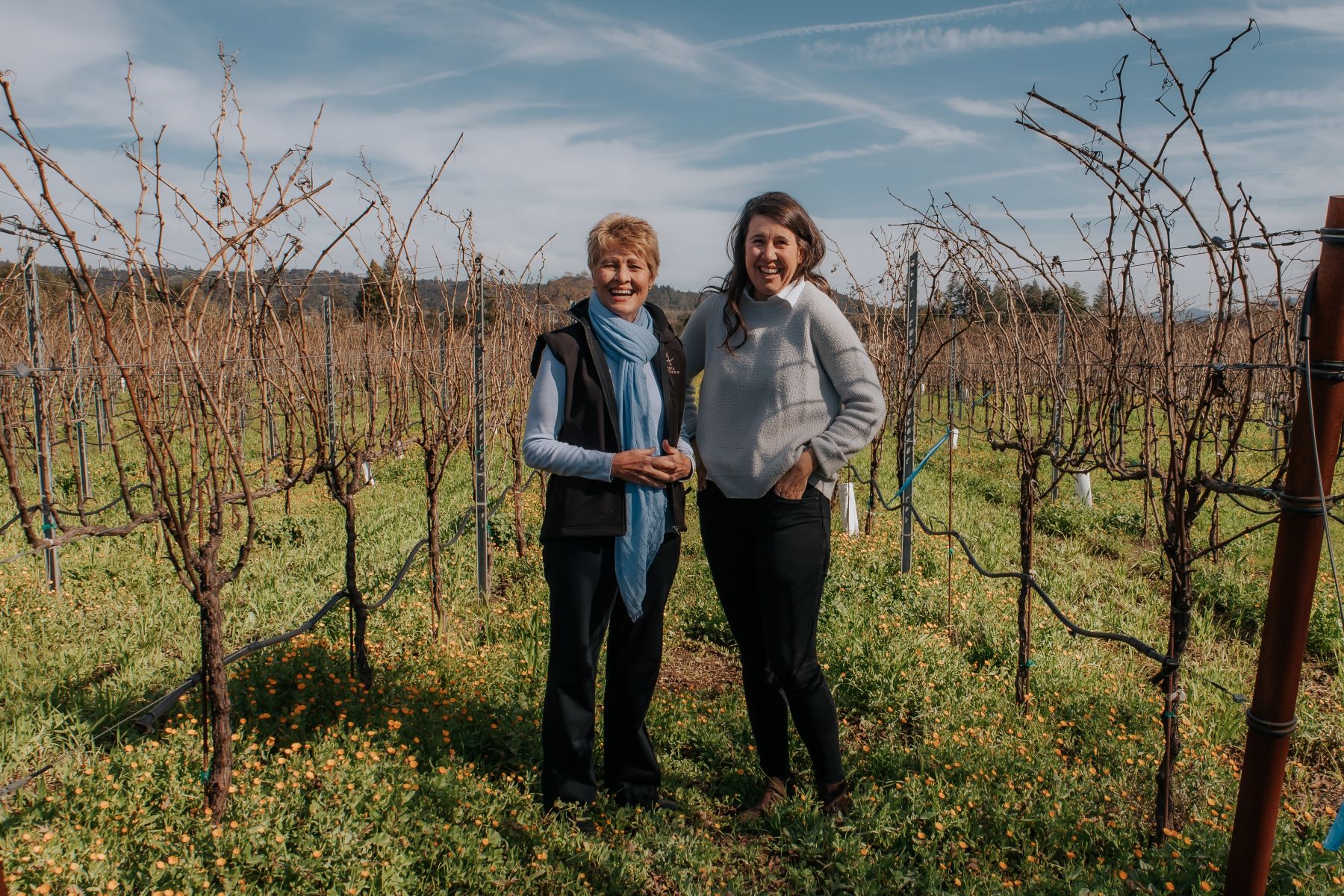Blanc de Blancs
The Story Behind My Favorite Bubbly and…

…three fascinating secrets.
As we celebrate our 20th anniversary, I'm excited to share a series of short weekly posts that take you behind the scenes, revealing memorable moments that have shaped our journey at Amista Vineyards.
Sparkling wines hold a special place in the heart of Amista Vineyards, and one of our most beloved creations is our Blanc de Blanc. Here’s a behind-the-scenes look at how this signature bubbly came to life and the unique details that make it truly one-of-a-kind.
1. Winemaker Ashley’s First Sparkling Adventure
In 2011, Ashley Herzberg joined Amista as our winemaker. By then, we had already been crafting a Sparkling Syrah since 2008, thanks to a creative spark from my late husband, Mike, who was also our first winemaker. While I loved the Syrah, my dream was to see a Blanc de Blanc—my personal favorite—added to our lineup.
Ashley and I were standing in our Chardonnay vineyard just months after she joined the team, and the idea struck: Could we create a sparkling wine from these very grapes? To this day, we both claim credit for the idea, but perhaps it was a shared vision born from our mutual love of bubbles. Ashley, undaunted by the challenge of crafting her first sparkling wine, immediately said, “Yes, we can!”
That fall, we harvested 3.25 tons of Chardonnay grapes, producing 214 cases of what would become our first Blanc de Blanc—a crisp and refreshing wine that continues to delight us and our community.
2. Blanc de Blanc…or Blanc de Blancs?
If you’ve ever enjoyed a sparkling wine labeled Blanc de Blancs, you may have wondered about the difference in our naming. While the traditional French term is plural, meaning "white from whites," our label simply says Blanc de Blanc - “white from white.”
Here’s how it happened: I loved Blanc de Blancs from a well-known Northern California sparkling house but hadn’t paid close attention to the plural spelling on the label. Two years after releasing our first vintage, a host on a live radio show asked me about our choice of the singular term. He may have noticed the surprised look on my face because he offered, “Is it because it is made from a single white grape variety?” And I said, “Yes, that’s exactly right.”
While my reaction was spontaneous, it turned out to be accurate. Nearly all Blanc de Blancs are made from 100% Chardonnay, as is ours. We’ve kept the name Blanc de Blanc ever since—and while the singular term remains rare, we’re proud to have embraced this unique twist. Who knows? Perhaps we’ve even started a trend.
3. Non-Vintage Labels, Vintage Roots
Another common question we hear is: Why are your sparkling wines labeled non-vintage if they’re all harvested from a single year?
The answer lies in the aging process. At Amista, we craft our sparkling wines to be vibrant and fresh, with aging periods of 12 to 18 months before disgorging. This timeline contrasts with Champagne’s strict requirement of at least three years of aging for vintage designation. While no such regulations apply in the U.S., we choose to follow the spirit of this tradition by refraining from vintage dating.
Interestingly, most non-vintage sparkling wines are blends of several years, designed for consistency. By contrast, each of our sparkling wines reflects the unique climate and character of the harvest year. The result? A true vintage wine in every sense—except for the label.
A Celebration in Every Glass
Our Blanc de Blanc represents the perfect blend of passion, creativity, and commitment to quality. From its serendipitous beginnings in our Chardonnay vineyard to its distinctive name and aging process, every bottle tells a story.
Raise a glass of Amista Blanc de Blanc, and celebrate not just a wine, but the joy of discovery and the shared love of bubbles that brought it to life. Cheers!
Still Thirsty?
If you want to learn more, here is a curated list of resources.
What Does ‘Blanc de Blancs’ Mean in Wine?
The Difference Between Multi-Vintage and Nonvintage Champagnes